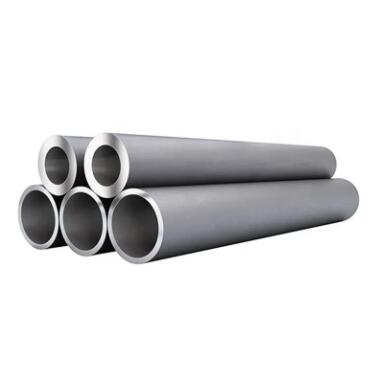Crafting Durability: Heat Treatment Processes for 904L Stainless Steel
2024-01-11
Introduction:
Heat treatment is a pivotal step in the manufacturing process of stainless steel, influencing its mechanical properties, structure, and performance in various applications. When it comes to 904L Stainless Steel, a high-alloy austenitic stainless steel renowned for its exceptional corrosion resistance, understanding the applicable heat treatment processes is essential. In this blog post, we will delve into the intricacies of the heat treatment methods used for 904L Stainless Steel, exploring how this critical step enhances the alloy's properties.
Annealing:
1. Solution Annealing:
- Solution annealing is a common heat treatment method for 904L Stainless Steel.
- The process involves heating the material to a temperature within the austenitic range (usually 1950°F to 2050°F or 1065°C to 1121°C) followed by water quenching.
- Solution annealing eliminates any precipitates, carbides, or phases that may have formed during previous processing, ensuring a homogeneous microstructure.
Cold Working and Forming:
2. Cold Forming and Cold Working:
- While 904L Stainless Steel can be cold worked and formed, it is essential to maintain control over the amount of deformation to prevent excessive hardening.
- The alloy's excellent formability allows for the creation of intricate shapes and structures through processes like bending, rolling, and deep drawing.
Stabilization Treatment:
3. Stabilization Treatment:
- In some instances, stabilization treatment may be employed after solution annealing to enhance the corrosion resistance of 904L Stainless Steel.
- This treatment involves holding the material at a specific temperature range (usually around 1950°F or 1065°C) for a specified duration, followed by water quenching.
Hot Working:
4. Hot Working:
- 904L Stainless Steel is amenable to hot working processes such as forging, extrusion, and hot rolling.
- The elevated temperatures during hot working contribute to the material's favorable grain structure and improved mechanical properties.
Stress Relief Annealing:
5. Stress Relief Annealing:
- Stress relief annealing is performed to reduce residual stresses that may have accumulated during welding or forming processes.
- The material is heated to a specific temperature and held for a duration, followed by slow cooling, relieving internal stresses without compromising corrosion resistance.
Post-Weld Heat Treatment (PWHT):
6. Post-Weld Heat Treatment (PWHT):
- PWHT may be applied after welding thick sections of 904L Stainless Steel to improve the mechanical properties of the welded joint.
- The treatment involves heating the material to a specific temperature, followed by controlled cooling.
Practical Considerations:
Conclusion:
In the realm of stainless steel engineering, the heat treatment processes applied to 904L Stainless Steel are integral to shaping its performance characteristics. From solution annealing to stress relief and stabilization treatments, each step plays a vital role in enhancing the alloy's corrosion resistance, mechanical strength, and formability. As industries continue to rely on 904L Stainless Steel for critical applications in corrosive environments, a nuanced understanding of these heat treatment processes ensures the alloy's enduring durability and reliability in the face of diverse and demanding challenges.



